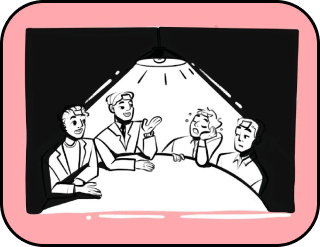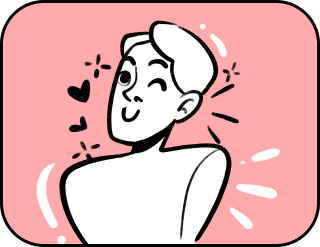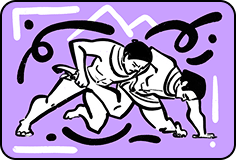Category: Materialization technologies
Professions lost in time
“A profession must initially be an act of love. And in no way a marriage of convenience”
Haruki Murakami
Dear readers! Welcome to the only auction in the world devoted to professions of the past! Are you bored with your current work and eager to try something new, yet worried that your profession may soon become obsolete? You have come to the right place! Today, you have the chance to become the happy owner of a strange, rare, or unusual craft that has vanished from the face of the Earth due to technological progress and evolution. The selection is truly diverse, so absolutely everyone has the opportunity to claim the most coveted lot. We are confident that our offerings will delight you and allow you to breathe new life into professions that have long disappeared. Before we begin, let us remind you of the basic rules of the auction: bids are made in turn, each bid must increase by at least ten percent, and the winner is the person who makes the highest bid. In the case of equal bids, the lot will be sold to the participant who placed their bid first. And remember, there is no place for greed at our auction—choose your new profession with your heart.
“No trade is despicable, there are only despicable people who pursue it dishonorably”
Poet Pierre Boast
Ladies and gentlemen, may I present to you Lot Number One!
This profession emerged as one of the earliest in the world. And no, we are not talking about ancient poets, gladiators, or philosophers. Ancient Roman aristocrats always strove for beauty and aesthetics, yet dense hair on the face and body often spoiled the stately appearance of the nobility. Smooth, flawless skin was considered an essential attribute of handsome men and beautiful women in Ancient Rome. To solve this problem, they appeared—the underarm hair pluckers.
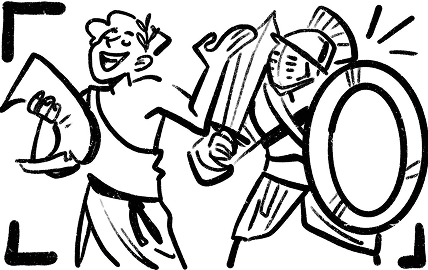
Skillfully wielding bronze tweezers, practitioners of this trade removed hair from aristocrats’ bodies one strand at a time, gifting them attractive smoothness. This work always demanded considerable effort, both from the hair plucker and their client. As a result, underarm hair pluckers of the time were constantly experimenting with various mixtures and creams that would make unwanted hair fall out effortlessly. The monotonous and painstaking labor was sometimes accompanied by the screams of aristocrats with a low pain threshold. This profession is most suitable for employees of modern-day waxing and depilation studios, but anyone can bid for this lot. Starting price—five minutes of your lunch break. Who will offer more?
And now, presenting Lot Number Two!
A job straight from the Middle Ages, ideally undertaken together with your significant other to simultaneously occupy two vacant positions—the royal chambermaid and the king’s court latrine attendant.
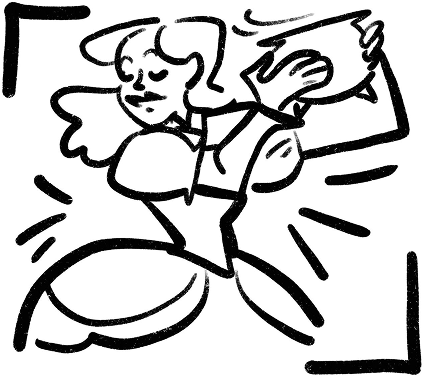
To work in these positions, knowledge of seamanship is unnecessary, as is the ability to seduce men. However, a sound understanding of human anatomy, specifically the gastrointestinal tract, will be invaluable, as you will need to carefully monitor the king’s digestion to ensure His Majesty can relieve himself in the most comfortable conditions. The chambermaid must be ready to work around the clock, cleaning and emptying the royal chamber pot at a moment’s notice. After all, money does not smell, and this position comes with full pay.
Meanwhile, your partner—the court latrine attendant—will gain the opportunity to become the closest servant to the monarch, with access to all of His Majesty’s most intimate spaces. The attendant will be responsible for carrying an ancient precursor to the modern toilet, a chair with an opening and a pot beneath it, and ensuring a supply of clean water and towels. Memorizing the ruler’s daily menu is also essential, as it is your duty to inform the king when not to schedule important meetings in order to allow a few minutes for his private business. By the way, King Henry VI established this profession, which greatly eased the lives of future monarchs in matters of natural necessities.
The starting bid for this lot is one hour of healthy sleep. Do not be stingy—this is truly a hot offer.
The next remarkable Lot Number Three
It is a profession for those who love to travel, take long walks in the fresh air, and connect with nature. If that sounds like you, we invite you to become the right hand of the ancient doctors. These physicians believed that any unknown illness could be treated with bloodletting, and leeches were considered the most skilled practitioners in this field. If you choose the position of leech collector, it will be your task to negotiate cooperation with these small but essential creatures.
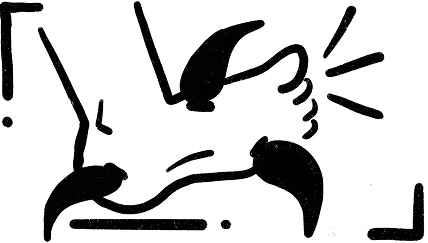
Your duty will be simple, though not particularly pleasant—to wander barefoot through swampy areas, serving as bait for the leeches. Once several bloodsuckers attach themselves to your ankles, you will need to carefully remove them and place them in a special barrel. Ah, and do not forget to eat plenty of meat and take iron supplements, otherwise after a few days of work you may start to lose consciousness from blood loss. Other than that, there are no drawbacks, and the starting bid is quite appealing—just one missed corporate anniversary celebration.
Lot Number Four
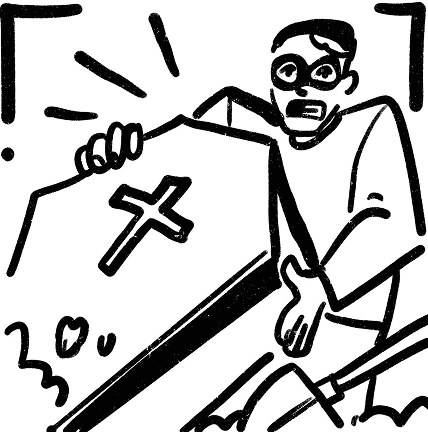
It is also directly related to medicine and the work of ancient doctors. In addition to their keen interest in leeches, physicians were in desperate need of specimens to study human anatomy. For this reason, they hired a special worker—a body snatcher. Autopsies in ancient times were strictly prohibited by church law, so the search for research “materials” took place under the cover of night. Body snatchers, working on behalf of a familiar physician, exhumed the bodies of deceased compatriots and delivered them to the doctor for further study. This profession remained relevant and in demand until the end of the nineteenth century, despite provoking public outrage. The starting bid for this lot is a friendly and responsible team.
Up next is Lot Number Five
It is a profession for individuals with good physical fitness who do not suffer from asthma attacks or claustrophobia.
The name of the profession is quite self-explanatory—chimney sweep. This craft originally emerged in Germany, but the first official mention of chimney sweeps is associated with cleaning the chimneys of the castle of King Christian IV of Denmark in 1639.
In the seventeenth century, the first tools for this work appeared in England, and in the eighteenth century, equipment was invented for cleaning chimneys from the bottom up. By choosing this profession, you will essentially become a type of maid inside the chimneys. Do not expect a cute costume, but facial mud masks are definitely provided. It is quite likely that you will come into contact with harmful chemicals or gases, which can lead to serious poisoning, and when working with faulty equipment or repairing a chimney, there is a risk of burns or physical injury, especially if safety precautions are ignored.
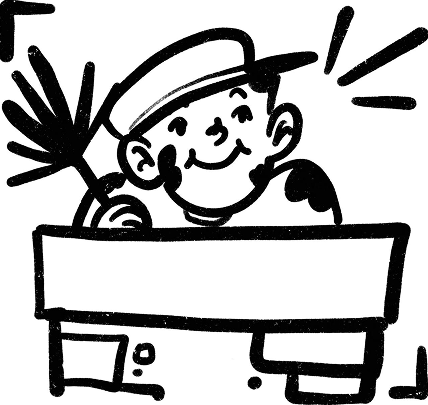
By the way, chimney sweeps were not limited to men—women and children could also take on this profession. These delicate individuals were often the first practitioners of this ancient craft, as entering a chimney required a small, slender body. Otherwise, the job is excellent: people will certainly thank you for clean chimneys, and upon meeting you, they will feel lucky—a living and dry chimney sweep was always considered a bearer of good fortune. Moreover, you will not have any annoying colleagues—just you, a narrow chimney, and possibly some spiders. An ideal option for introverts! Today, the profession of chimney sweep remains in demand due to the popularity of fireplaces and ventilation systems. The starting bid for this lot is two ten-minute coffee breaks. We look forward to your offers.
The Next Lot
It will appeal to everyone who enjoys rising before others and engaging in active work, depriving sleeping people of their rest. Introducing the knocker-upper! This profession, which emerged at the end of the eighteenth to the beginning of the nineteenth century, was relevant during the Industrial Revolution in Ireland and Great Britain, as mechanical alarm clocks did not yet exist, and people needed to arrive at work at a specific time. The role of the annoying mechanism was performed by specially trained individuals who walked the streets early in the morning and woke people by knocking on doors or windows. For residents on upper floors, peas were shot from special tubes at the windows until the sleepyhead looked out with a disgruntled expression. The main risks of this job included a few unflattering words directed at the worker and the possibility of becoming a living target for a not-so-fresh vegetable or fruit. Otherwise, waking people was quite fun and, of course, useful. The starting bid for this lot is one week of paid vacation.
For those who prefer to work mainly with their feet, we have a special offer—the profession of a fulling mill worker
This craft was practiced in Ancient Rome and required dedication and multifunctionality from its specialists. Fulling mill workers manually felted, carded, stretched, thickened, and dyed wool to create dense and warm fabrics, as well as washed and repaired old clothing. And what do the feet have to do with it? The process of treating fabrics often resembled the work of winemakers treading grapes. Only instead of fragrant berries, fulling mill workers spent days treading fabric in a barrel or vat. The fabric was first soaked in water and alkaline solutions for thorough cleaning, which often caused irritation, sores, and skin diseases on the workers’ feet.
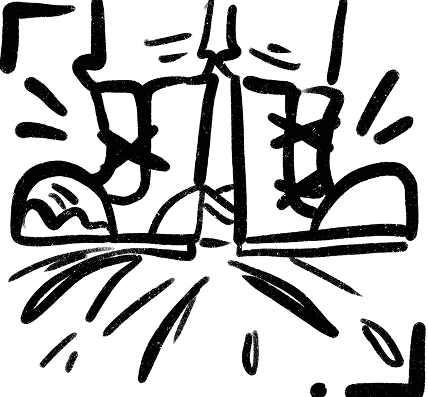
Furthermore, stagnant urine collected from nearby farms was used to prepare the alkaline solution. Fulling mill workers still exist today, but the automation of production has reduced part of their responsibilities. Modern fullers oversee fabric quality, adjust machinery for processing, and select the proper parameters for producing different types of cloth. This is certainly interesting, but for those wishing to gain new experiences and unforgettable impressions, we still recommend exploring the original, traditional form of the craft. The starting bid for this lot is a stable work schedule.
And the Final Lot for today
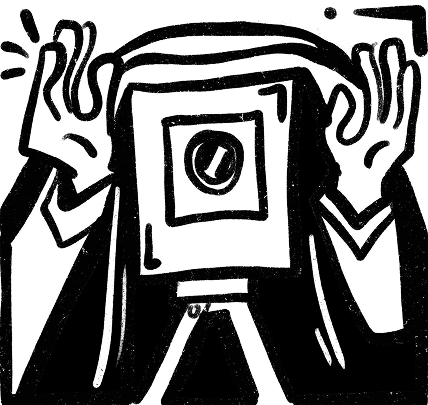
The profession of a daguerreotypist, the world’s first photographer with an unconventional approach to their craft. The earliest instances of this profession were observed in France and date back to 1839. Later, daguerreotypy spread throughout America and Europe. To master this craft, one must learn to work with copper plates, silver, and mercury, as well as develop skills in processing photographic materials using iodine and bromine vapors. In addition, it is important to understand the operating principle of the camera obscura. These modest skills are sufficient to transfer the image of any person onto a copper plate polished to a mirror-like shine.
Daguerreotypists were often approached by presidents of various countries, famous writers, stage performers, and high-ranking military officers. Therefore, if you are seeking an unusual way to meet media personalities, this profession can serve you well. Due to the special value of this lot, the starting bid is six public holidays for one calendar year.
If none of the lots of historical professions appeal to you, do not despair! Seek yourself in the present! Humanity changes tools, but not roles. A cook at the campfire and a molecular gastronomy chef address the same task—to feed and amaze. A scribe writing with a quill and a copywriter typing on a keyboard both create narratives that will outlast their time. We are not inventing professions anew; we are merely dressing them in costumes from the future. This reinforces the words of the Soviet writer, poet, and dramatist that “All professions are important, all professions are necessary.”
Without body snatchers, medicine could not have advanced from a dead point to its current scale. Without daguerreotypists, modern photographic art would not exist. Thanks to the hard work of ancient chimney sweeps, we have the opportunity to equip our homes with stoves or fireplaces without harming our health.
Sometimes, to fully appreciate your own profession, it is necessary to try your hand at what served as the starting point for any contemporary occupation or craft. Who knows, the ancient analogue of your life’s work may turn out to be more fascinating and attractive?
“Proof of the authenticity of any vocation is the love for the hard work it demands”
Logan Pearsall Smith
Your thought is a big bang of ideas. Our journal is its source.
Thank you!


